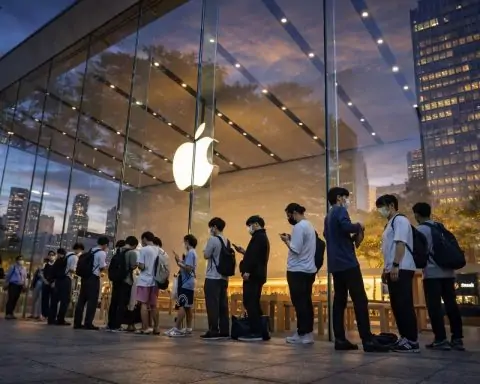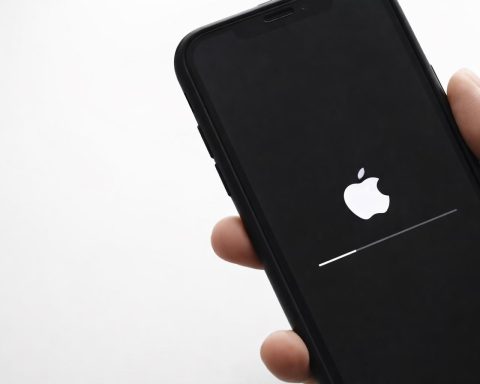Key Facts
- 5G leaps in Kuwait and UK: Kuwait activated a nationwide 5G-Advanced (5G-A) network across all three carriers (Ooredoo, Zain, stc) with Huawei, boasting up to 10× faster speeds and ultra-low latency – a first step toward 6G readiness [1] [2]. In the U.K., Virgin Media O2 expanded its 5G Standalone coverage to 500 towns and cities (over 70% of the population) as part of a £700 million investment to futureproof its network [3] [4]. Virgin’s CTO noted they’re “investing £2 million every single day” to enhance reliability and enable upcoming innovations [5].
- New networks & upgrades:Vodacom Tanzania announced a $100 million modernization to upgrade thousands of mobile sites and IT systems (including its M-Pesa platform), extending 4G/5G coverage to both cities and rural areas [6] [7]. Meanwhile in Zambia, a public-private partnership between the government, Airtel and IHS is rolling out 152 new cell towers with solar-backed power – 40 live now, 12 more by end of September – to connect remote communities and improve network reliability (no more dropped calls) [8] [9].
- 2G/3G sunset plans: Europe’s carriers are accelerating the phase-out of legacy networks. Orange France confirmed it will switch off 2G by end-2026 (with regional pilot shutoffs in early 2026) and 3G by 2028, as customers migrate to 4G and 5G [10] [11]. Rival French operators plan similar 2G retirements by 2026 [12]. (Notably, industry groups in France have urged delays to accommodate remaining 2G/3G use cases like elevator emergency phones [13].)
- Regulatory shake-ups: The U.K.’s Ofcom opened applications (Sept 16–17) for its mmWave 5G spectrum auction, releasing an unprecedented 5.4 GHz of high-band spectrum in 26 GHz and 40 GHz bands [14] [15]. This spectrum will boost ultra-fast 5G capacity in busy areas and enable data-intensive applications. In Mexico, an upcoming 5G spectrum auction faces headwinds: AT&T is likely to skip bidding due to prohibitively high spectrum fees and poor returns in that market [16] [17]. (Spectrum costs in Mexico can comprise 85% of total network costs – far above the ~20% regional average – leaving past auctions with large swaths unsold [18]. The GSMA estimates millions more Mexicans could be connected if fees were lowered [19].)
- Technology shifts – toward 5.5G and 6G: Beyond standard 5G, operators are eyeing upgrades. The Global Mobile Suppliers Association reports two dozen operators investing in 5G-Advanced (5.5G), with at least 6 networks already live (e.g. Telstra, China Mobile) testing features like 10 Gbps speeds and new use cases [20]. In parallel, early work on 6G is emphasizing evolution over revolution: the latest 3GPP discussions indicate the next-gen air interface will likely stick with an upgraded form of OFDM, allowing 6G to be rolled out on existing 5G infrastructure [21] [22]. Industry experts welcome this “very conservative decision,” noting it avoids a costly rip-and-replace of equipment and lets operators gradually re-farm spectrum to 6G [23] [24]. “There’s always lots of hype over the next generation… we, the operators, still end up getting similar or reduced ARPU. Therefore our interest is cost per bit and reducing network capex/opex,” one network director remarked, underscoring the cautious approach to 6G investment [25].
- 5G for industry and defense: Commercial 5G isn’t just for consumers – it’s powering private networks and defense applications. NATO’s tech agency revealed progress on its Multinational 5G initiative to integrate 5G into military communications across allies [26]. The project, launched in 2024 with nations like Spain, Italy and Turkey, focuses on using civilian 5G as a “connecting fabric” and force multiplier for military and emergency response connectivity [27]. In the U.K., Verizon Business (with Nokia) moved from planning to building a private 5G network for Thames Freeport, a major logistics hub – a complex deployment across three port sites slated to go live by March 2026 to drive an “AI city” vision for smart logistics [28] [29].
- Expert insight – 5G transforming operations: Enterprises are already reaping 5G’s benefits. Newmont, the world’s largest gold miner, has deployed private 5G at its mines to replace patchy Wi-Fi and connect fleets of autonomous vehicles. Chris Twaddle, Newmont’s networks director, says the ultra-reliable 5G network eliminated previous dead zones and downtime: “We needed more – much more – and we needed it everywhere. 5G was able to achieve this in a deterministic, predictable way that our operations could begin to rely on.” [30] By enabling real-time remote control of machines and preventing false safety shutdowns due to lost connections, the dedicated 5G has boosted both worker safety and productivity in these challenging environments [31] [32].
Carrier & Network Developments
Kuwait’s leap to 5G-Advanced: In a major network upgrade, Kuwait has rolled out nationwide 5G-Advanced (5G-A) service, becoming one of the first countries to deploy the next evolutionary step of 5G. The deployment – completed by Kuwait’s Ministry of Communications contractor Knetco alongside Huawei – upgraded all three mobile operators (Ooredoo, Zain, and stc) to 5G-A technology [33]. 5G-Advanced promises tenfold faster speeds than standard 5G, significantly lower latency, and higher capacity, enabling advanced use cases from smart cities to drone connectivity [34]. It aligns with Kuwait’s Vision 2035 digital agenda and even “lays the groundwork for potential future migration to 6G,” according to local reports [35] [36]. Knetco’s CEO hailed the milestone, saying “the arrival of 5G Advanced will transform how Kuwait communicates, operates, and innovates” by delivering lasting benefits across government, industry and consumers [37]. Kuwait joins a small elite of 5G-A adopters globally – industry tracking shows only half a dozen 5G-Advanced networks launched worldwide so far (e.g. in China, Singapore, Australia), though at least 26 operators in 15 countries are investing in trials of the technology [38]. This positions Kuwait at the forefront of the 5.5G era, as 5G-A capabilities like 10 Gbps throughput and precise positioning pave the way toward an eventual 6G standard.
Virgin Media O2’s 5G SA expansion: In the United Kingdom, carrier Virgin Media O2 (VMO2) announced a major expansion of its 5G Standalone network, now live in 500 towns and cities and reaching over 70% of the UK population [39]. This gives VMO2 the largest 5G SA footprint in the country to date. Uniquely, the network runs on a new cloud-native 5G core, enabling advanced applications such as autonomous vehicles, remote healthcare, robotics and network slicing for dedicated ultra-reliable service [40] [41]. In each of those 500 locations, at least 90% outdoor coverage is provided on 5G SA [42], ensuring broad availability. The rollout is part of a £700 million mobile network investment this year, which also includes hundreds of new 4G/5G small cells and capacity upgrades to relieve urban congestion [43]. “We are investing £2 million every single day to improve our mobile network… futureproofing our network and paving the way for exciting customer-led innovations ahead,” said VMO2 CTO Jeanie York [44]. The carrier’s aggressive push underscores the UK operators’ race to standalone 5G: VMO2’s network went live for enterprises earlier in 2025 and is now expanding to consumers, rivalling BT/EE and Vodafone’s own 5G SA efforts. With the expansion, VMO2 also highlighted its commitment to reliability – touting the initiative as “customer-centric” and focusing on consistent performance as a differentiator [45]. This 5G SA ubiquity will form the backbone for new services (like immersive AR/VR, real-time smart city systems, and next-gen IoT) that require the low latency and slicing only a standalone 5G core can provide [46].
Phasing out old networks: As 5G scales up, legacy 2G and 3G networks are on the way out. Orange, one of Europe’s largest carriers, has officially outlined its timetable for retiring 2G and 3G in its home market of France. Per an August update, Orange will shut down 2G (GSM) service by end of 2026, and follow by switching off 3G by 2028 [47] [48]. The 2G sunset will start with a pilot in several south-western regions in March 2026 (impacting departments including Haute-Garonne, Gers, and others) and then roll out nationally by September 2026 [49]. Orange noted that over three decades it has built extensive 2G/3G networks, but now “over the next few years, 2G and 3G will give way to 4G and 5G”, reflecting that virtually all voice and data traffic has transitioned to newer networks [50]. France’s other operators are on similar schedules – Bouygues Telecom and SFR (Altice) also plan to switch off 2G by 2026 [51]. One rationale is to repurpose spectrum: shutting 2G/3G frees up radio bands (e.g. 900 MHz, 2100 MHz) for 4G and 5G expansions. Regulators and telcos are coordinating on this generational shift, though there are some concerns in specific sectors. For example, elevator emergency phones and other M2M devices still using 2G/3G prompted the French Elevator Federation to ask for a delay in the shutdown until those systems can upgrade [52]. Nonetheless, Europe is moving firmly toward an all-4G/5G era by decade’s end, mirroring similar plans in the U.S. and Asia where 2G/3G sunsets are either completed or underway.
Global carrier notes: Around the world, other carriers marked milestones in the past two days. In India, the country’s 5G rollout continues accelerating – while not in this week’s news, it’s notable that Vodafone Idea (Vi) recently joined rivals in live 5G, launching in Pune last month and expanding to five cities in Maharashtra with unlimited data offers [53] [54]. Vi is leveraging partnerships with Ericsson and deploying AI-powered network optimization, simultaneously upgrading thousands of 4G sites to improve coverage while it plays catch-up on 5G [55] [56]. And in Africa, operators are pushing into new territory: Vodacom made South Africa’s first Voice over 5G (VoNR) call this month as a prelude to offering voice on 5G networks [57] [58]. These developments underscore that the GSM family of technologies (2G through 5G) remains a dynamic space globally – with mature markets refarming 2G spectrum for 5G, and emerging markets leapfrogging straight to 4G/5G for both voice and data.
Infrastructure and Rural Coverage News
Massive upgrades in Tanzania: One of the largest network investment drives this week comes from Vodacom Tanzania, which announced a $100 million technology modernization project to bolster its mobile infrastructure [59]. This program – among the biggest since Vodacom began operations 25 years ago – will upgrade thousands of network sites across the country and enhance core IT systems [60] [61]. The goals are to significantly improve voice quality and data speeds for customers, “transform connectivity” for Tanzanians, and extend digital inclusion deep into underserved areas [62]. Importantly, the project isn’t limited to radio towers: it also involves modernizing Vodacom’s M-Pesa mobile money platform and other backend infrastructure to ensure more stable fintech services and cybersecurity for its 30 million subscribers [63] [64]. Over 1,000 mobile sites have already been upgraded recently in regions like the Lake Zone, southern highlands, and central Tanzania [65]. The network refresh also emphasizes sustainability – in line with Vodacom’s Net Zero 2035 pledge, new equipment is more energy-efficient, expected to cut network power consumption by up to 30% while expanding coverage [66]. “With this investment, we are laying the groundwork for the next five years and beyond,” said Vodacom Tanzania MD Philip Besiimire, adding that the aim is to empower people through better access (bridging the urban-rural digital divide), use greener technologies, and build customer trust by improving reliability [67]. The upgrade includes deploying multi-band radios and antenna technologies that let one tower broadcast across multiple frequency bands at once, optimizing tower space and costs as Vodacom expands 4G and 5G coverage nationwide [68]. For Tanzania – where Vodacom is the market leader – this infusion should dramatically boost network capacity and pave the way for new services (from mobile banking to streaming and IoT) in areas that previously had limited connectivity.
Zambia’s new towers for remote areas: In Zambia, a collaborative project between the government and industry is tackling rural coverage gaps head-on. The Ministry of Technology and Science, Airtel Zambia, and tower company IHS announced they are rolling out 152 new telecom towers countrywide to extend mobile service in underserved communities [69]. As of mid-September, 40 of these towers are already on-air, with another 12 going live by the end of this month [70]. The remaining hundred towers are on track to be operational by November 2025 [71] [72]. These aren’t standard base stations – they are equipped with smart hybrid power systems (solar, battery, and generator backup) to ensure uninterrupted service even in off-grid areas prone to electricity issues [73]. This directly addresses a chronic issue: dropped calls and unreliable internet in rural Zambia due to power cuts or weak coverage will be mitigated by the new solar-backed sites [74]. During a site visit to one of the new towers near Lusaka, Zambia’s tech minister Felix Mutati highlighted that a single tower can connect over 11,000 students at a local university to online resources and financial services that were previously out of reach [75]. “This project highlights the government’s determination to bridge the digital divide by ensuring citizens have access to reliable, affordable digital services for education, commerce and daily communication,” Mutati said [76]. The initiative is also about network modernization: many of these towers will carry 4G LTE and even 5G signals, accelerating the shift away from older 2G/3G in Zambia [77]. By unlocking online education, telehealth, e-commerce and mobile banking in rural districts, the socioeconomic impact could be huge. The partnership illustrates a successful public-private model (PPP) – government, regulator (ZICTA) and private operators co-investing – which Mutati called a “powerful testament” to how combining strengths can rapidly build digital infrastructure [78] [79]. In fact, on top of the 152 towers, Zambia’s Universal Service Fund plans 80 more towers to be constructed in Q4 2025 [80], showing an ongoing commitment to reach the remotest corners. Taken together, these efforts should dramatically enhance digital access across Zambia, unlocking new opportunities in everything from online education to agricultural markets for rural populations [81] [82].
Other infrastructure notes: Elsewhere, network build-outs continue. The U.K.’s Shared Rural Network (a joint program by carriers and government) recently announced it had upgraded 77 masts by the end of August to improve 4G coverage in remote British communities [83]. And in the satellite arena, cellular dead zones are being targeted from space: A new GSA report highlights that by September 2025 there are 170 satellite-to-mobile network partnerships in 80 countries, as firms like SpaceX’s Starlink, AST SpaceMobile and others race to offer direct-to-phone connectivity [84]. In fact, SpaceX just inked a $17 billion spectrum deal with EchoStar to bolster its nascent Starlink-to-cell service [85]. The spectrum will allow SpaceX to deploy upgraded “cell tower in space” satellites that expand mobile network coverage by 100× capacity and eliminate terrestrial dead zones worldwide [86]. This underscores that infrastructure expansion isn’t limited to towers and fiber – it now extends to low-earth orbit. Together, terrestrial and non-terrestrial networks are shaping a future where high-speed mobile internet truly reaches everywhere, from rural villages to the open ocean and beyond.
Spectrum & Regulatory Updates
UK mmWave auction kicks off: The UK is pushing into high-frequency 5G. Ofcom, the British telecom regulator, has opened applications for its first auction of mmWave spectrum for mobile services [87]. Interested companies had a two-day window (September 16–17) to apply to bid on licenses in the 26 GHz and 40 GHz bands [88]. What’s at stake is a huge 5.4 GHz chunk of new spectrum – the largest release ever sold in one Ofcom auction [89]. These millimeter-wave bands can deliver extreme capacity and multi-gigabit speeds, albeit with limited range. Ofcom plans to auction mmWave licenses across 68 high-demand areas (major cities and towns) to boost network throughput in crowded venues like train stations, sports stadiums and city centers [90]. By unlocking these very high frequencies for 5G, the UK aims to enable cutting-edge wireless applications requiring massive bandwidth and low latency [91] [92] – think AR/VR, industrial IoT, or fixed wireless broadband as a fiber alternative. The UK is among the first countries in Europe to make mmWave widely available; Ofcom notes that globally, mmWave 5G is still in early stages, so this auction positions Britain at the forefront of ultra-fast 5G deployments [93]. The auction proper is expected to commence in October, with results (winners and prices) to be published by year-end [94]. This regulatory move follows Ofcom’s successful mid-band 5G auctions in 2021. Industry players – likely the four mobile operators and possibly private network providers – are now vying for slices of this high-frequency spectrum to augment their 5G networks. It’s a key piece of spectrum policy that could significantly improve mobile data capacity in dense UK locales in coming years.
Troubled spectrum auction in Mexico: In Latin America, a starkly different spectrum story is unfolding. Mexico is preparing for a new auction of 5G-suitable spectrum, but AT&T has signaled it will likely not participate – a symptom of deep structural issues in the Mexican mobile market [95] [96]. According to a Reuters report, AT&T’s withdrawal is driven by the very high spectrum costs and fees set by the government, which have made the business case for investment unappealing [97]. “With the current spectrum costs it is very likely that this auction will again be left deserted, as happened in the last auction,” a source at AT&T told Reuters [98]. Indeed, Mexico’s last auction in 2021 saw most frequency blocks go unsold due to lack of bidder interest. The issue is that Mexico charges mobile operators some of the highest spectrum fees in the world – annual fees and upfront costs that over a license term can comprise 85% of total spectrum cost, versus ~20% in other Latin countries [99]. This heavy financial burden has squeezed operators’ profitability. AT&T, which entered Mexico in 2015 with a $4 billion investment, has consistently lost money there and even returned portions of its spectrum in 2022 and 2023 to cut costs [100]. Telefónica (Movistar) similarly handed back all its spectrum and exited the market in 2021 [101]. The result is a market dominated by América Móvil (Telcel) – billionaire Carlos Slim’s company holds ~70% mobile share – while challengers struggle. The GSMA trade body estimates that if Mexico aligned spectrum prices to global norms, it could connect at least 5 million more people via 4G/5G who today remain offline [102]. The Mexican regulator’s stance, however, hasn’t significantly changed, so the upcoming 5G auction may see few takers beyond possibly Telcel. This raises big questions about Mexico’s 5G future: without affordable spectrum or healthy competition, 5G rollout could lag and the digital divide widen. The government has floated creating a state-run wholesaler or adjusting fees, but time is running short as 5G becomes critical infrastructure. AT&T’s expected no-bid is essentially a protest of the status quo – and a warning that policy must change to avoid yet another failed spectrum tender and lost investment [103] [104].
Security and vendor policies: (Globally, regulators also continue grappling with network security and vendor choices. Following broader Western trends, countries like Germany have been reviewing the role of Chinese vendors in 5G. Just last week, reports emerged that Germany plans to ban Huawei and ZTE equipment from significant parts of its 5G networks by 2026, citing security concerns [105] [106]. If enacted, German operators would have to rip out critical Huawei components, especially from core networks, over the next few years. Germany’s move aligns with restrictions already in place in the U.S., UK, Australia, and several EU neighbors [107] [108]. Portugal also signaled a ban on Huawei 5G gear through a security resolution in 2023 [109]. These policies don’t directly interrupt consumer service but require carriers to spend resources swapping suppliers. Combined with spectrum costs and rollout obligations, they add another regulatory layer influencing how and where next-gen networks are built. While not a headline in the past two days, this ongoing narrative underpins many 5G regulatory discussions worldwide in 2025.)
United States updates: The U.S., for its part, regained its ability to auction spectrum earlier this year after Congress restored the FCC’s lapsed auction authority. The FCC is now planning the next mid-band auctions (expected 2025–2026) focusing on 3.1–3.45 GHz for 5G. In parallel, the FCC is developing a “5G Fund for Rural America” – a multi-billion subsidy program to incentivize carriers to bring 5G to rural and underserved areas [110]. This week, industry groups urged reforms to the Universal Service Fund to support that rural 5G build-out [111]. On the policy front, Washington is also looking ahead to 6G: an FCC commissioner this month emphasized the need to allocate spectrum and foster R&D for “Next G” networks so that the U.S. can lead in 6G standards [112]. While these developments are more slow-burn than breaking news, they set the stage for how and when Americans might see 5G’s successor take shape.
Technology & Future Standards (5.5G & 6G)
5G-Advanced on the rise: As baseline 5G becomes ubiquitous, the industry’s focus is shifting to 5G-Advanced, often dubbed “5.5G.” This is a suite of enhancements (3GPP Release 18 and beyond) that upgrade 5G networks with better performance and new features before 6G arrives around 2030. The new Kuwait 5G-A network is a prime example, delivering notably higher throughput and capacity. It enables use cases like Li-Fi over 5G, drone control, and smart city applications that weren’t possible with early 5G [113] [114]. According to the Global mobile Suppliers Association, at least 26 operators across 15 countries are investing in 5.5G trials or deployments already, and 14 of those have moved from lab tests to field trials or pilots [115]. A handful – six operators as of mid-2025 – have even commercially launched initial 5G-Advanced services [116]. These include major carriers like China Mobile, Telstra (Australia), CTM (Macao) and Singtel (Singapore) [117]. The common theme is pushing mobile broadband to new extremes: peak speeds well above 1 Gbps (some aiming for 10 Gbps), latency under 5 ms, and network intelligence powered by AI. For instance, China Mobile’s 5G-A networks use massive MIMO and edge computing to enable real-time VR streaming and autonomous vehicle communication. The GSA notes several more operators are in the pipeline planning to invest in 5G-A soon [118]. We can expect features like RedCap (reduced-capability 5G for IoT), improved uplink speeds (for things like live 4K video from phones), and even preliminary AI-driven network management to be part of these upgrades [119] [120]. In short, 5G-Advanced is bridging the gap between today’s 5G and tomorrow’s 6G, ensuring current networks evolve to handle the next 4–5 years of demand. For consumers and enterprises, the benefits will appear as faster, more consistent connections and new services (like high-def holographic calls or cloud gaming without lag) running on existing 5G infrastructure.
6G vision taking shape: Even as 5G matures, the groundwork for 6G is being laid in labs and standards meetings. Notably, at a recent 3GPP working group meeting (for Release 19 and beyond), engineers decided to “play it safe” with the 6G air interface by sticking with a proven foundation: OFDM modulation [121] [122]. This decision – favoring an evolution of the 5G waveform rather than a brand-new signaling method – reflects a philosophy of backward compatibility and cost containment in 6G design. Some in the wireless community had hoped 6G would introduce a revolutionary AI-native air interface or exotic new modulation schemes (various proposals like OTFS, SCMA, etc. were floated) [123] [124]. But for now, 3GPP appears to be opting for continuity: keeping the frequency/time grid similar to 5G’s means carriers can upgrade to 6G via software and incremental hardware additions, instead of ripping out every base station [125] [126]. This conservative approach drew mixed reactions – some innovators are “disappointed” by the lack of a bold change, but many operators are “pleased” because it avoids massive new spending [127] [128]. As Virgin Media O2’s head of mobile access put it, if 6G sticks to an evolved 5G waveform, “it makes it really easy to partially re-farm bands from 5G to 6G and gradually introduce 6G on existing infrastructure” [129]. With industry ARPUs flat and no obvious killer app that 5G hasn’t already addressed, carriers are understandably cautious about 6G. They’ve been vocal through groups like the NGMN Alliance that 6G must deliver clear cost-per-bit improvements and energy efficiency gains, not just tech for tech’s sake [130] [131]. And indeed, those themes are emerging: one likely hallmark of 6G will be leveraging new spectrum (potentially the 6 GHz band, which could add lots of mid-band capacity) and even higher bands like sub-THz for special cases [132]. Also, AI and machine learning will be applied under the hood to optimize networks in real time (even if the air interface itself isn’t a radical AI-based design, contrary to earlier speculation) [133] [134]. On the user end, 6G is expected to enable things like truly immersive XR, tactile internet, digital twins at scale, and ubiquitous connectivity with even lower latency – essentially a seamless fabric between physical and digital. But the consensus forming is that 6G will be more about refinement and integration (combining terrestrial 5G, satellites, AI, edge cloud, sensing capabilities) than about a single transformative “new radio.” As one industry veteran quipped, the hype cycle is in check: “lots of hype… generally only benefits equipment vendors; we operators care about reducing cost per bit” [135]. Expect more concrete 6G demos around 2026–2027 when standards solidify, but for now the news is that the path to 6G may be gradual, focusing on practicality and real-world ROI.
Beyond connectivity – 5G in new domains: The evolution of mobile tech isn’t just faster phones; it’s also about extending wireless into domains like industry, defense, and space. This week provided a snapshot of that future. In defense, NATO’s Communications and Information Agency highlighted how 5G can serve as a dual-use platform for both civilian and military needs [136]. Under the “Multinational 5G” initiative, NATO members are testing 5G for mission-critical applications – for example, to link allied forces’ systems securely or to ensure interoperability of emergency services during crises [137] [138]. A key focus is standardization: NATO doesn’t want bespoke “military 5G” so much as using commercial 5G tech and adapting it for defense, which is faster and cheaper. “We don’t need to reinvent the wheel… we can deliver faster by adopting existing standards that industry has been leveraging for years,” noted Antonio Calderón, CTO at the NATO C&I Agency [139]. Early trials in Spain, Italy, and Turkey have shown the importance of 5G’s reliability and speed for connecting command centers, autonomous vehicles, and even linking into civilian networks for disaster response [140] [141]. The vision is to have a robust digital foundation (the “motorways”) in place so that future innovations – whether 6G or advanced AI systems – can plug into NATO operations without delay [142].
In the enterprise arena, private 5G networks are proliferating as companies seek wireless solutions tailored to their needs. The Thames Freeport project in the UK is one example from this week: Verizon and Nokia are building a bespoke 5G network across port terminals and logistics centers to enable smart port operations [143] [144]. This involves deploying multiple localized 5G cores and dozens of small cells to cover sprawling industrial sites, each with unique requirements – from autonomous trucks to real-time tracking of shipping containers. It’s a complex undertaking (“not the same at each site, each tenant has unique needs,” Verizon Business’s Jennifer Artley explained [145]) but promises to transform the port into a cutting-edge “AI city” of automation by the time it goes live in 2026 [146]. Such networks illustrate 5G’s flexibility: one network can be sliced and customized for different enterprises or use cases, something 4G couldn’t easily do.
And as highlighted, Newmont’s private 5G in mining is a vivid case of 5G delivering results where prior tech failed. Deep underground and across vast open pits, Newmont struggled with Wi-Fi dropouts that would halt automated machines. After partnering with Ericsson to install private 5G, Newmont can now reliably connect dozens of autonomous drills, haulers, and cameras simultaneously, over much greater distances, without losing packets [147] [148]. This has “eliminated downtime from poor connectivity” and prevented false safety shutdowns, significantly improving productivity and worker safety (since operators can control machinery remotely in hazardous areas) [149] [150]. The quote from Chris Twaddle – “5G was able to achieve [what we needed] in a deterministic, predictable way that our operations could rely on” [151] – encapsulates why so many industries (manufacturing, mining, healthcare, logistics) are excited about private 5G. It brings the robustness and QoS of wired connections to wireless, enabling real-time control and automation in ways Wi-Fi or older networks couldn’t match.
From these trends, it’s clear the GSM evolution (2G→3G→4G→5G→6G) is not slowing down. 5G is quickly expanding and bifurcating into consumer networks, enterprise/private implementations, and even non-terrestrial extensions – all while the seeds of 6G are quietly being planted in standards bodies. The news from September 17–18, 2025, shows a mobile industry in overdrive: expanding coverage to the unconnected, boosting capacities in tech-savvy markets, navigating regulatory hurdles, and experimenting with new frontiers of connectivity. For a tech-savvy audience, the takeaway is that mobile internet infrastructure worldwide is entering a new phase – one where ubiquitous high-speed coverage (even in rural or remote areas) is becoming a reality, 5G is maturing into a platform for innovation in every field, and the roadmap to 6G is coming into focus with an emphasis on practicality and inclusivity. The coming months will no doubt bring more spectrum auctions, more 5G Advanced rollouts, and early glimpses of what 6G can do, as the global race in mobile communications charges ahead.
Sources: Global news outlets and industry publications including RCR Wireless News (Juan Pedro Tomás) [152] [153], Mobile World Live [154] [155], Reuters [156] [157], DatacenterDynamics [158], Mexico News Daily/Reuters [159] [160], Ofcom [161], Connecting Africa (Informa) [162] [163], Rethink Research [164] [165], and expert commentary from industry leaders. The information reflects developments as of September 18, 2025.
References
1. www.rcrwireless.com, 2. www.rcrwireless.com, 3. www.rcrwireless.com, 4. www.rcrwireless.com, 5. www.rcrwireless.com, 6. www.connectingafrica.com, 7. www.connectingafrica.com, 8. www.connectingafrica.com, 9. www.connectingafrica.com, 10. www.datacenterdynamics.com, 11. www.datacenterdynamics.com, 12. www.datacenterdynamics.com, 13. www.datacenterdynamics.com, 14. www.ofcom.org.uk, 15. www.ofcom.org.uk, 16. mexiconewsdaily.com, 17. mexiconewsdaily.com, 18. mexiconewsdaily.com, 19. mexiconewsdaily.com, 20. www.rcrwireless.com, 21. rethinkresearch.biz, 22. rethinkresearch.biz, 23. rethinkresearch.biz, 24. rethinkresearch.biz, 25. rethinkresearch.biz, 26. www.mobileworldlive.com, 27. www.mobileworldlive.com, 28. www.mobileworldlive.com, 29. www.mobileworldlive.com, 30. www.rcrwireless.com, 31. www.rcrwireless.com, 32. www.rcrwireless.com, 33. www.rcrwireless.com, 34. www.rcrwireless.com, 35. www.rcrwireless.com, 36. www.rcrwireless.com, 37. www.rcrwireless.com, 38. www.rcrwireless.com, 39. www.rcrwireless.com, 40. www.rcrwireless.com, 41. www.rcrwireless.com, 42. www.rcrwireless.com, 43. www.rcrwireless.com, 44. www.rcrwireless.com, 45. www.rcrwireless.com, 46. www.rcrwireless.com, 47. www.datacenterdynamics.com, 48. www.datacenterdynamics.com, 49. www.datacenterdynamics.com, 50. www.datacenterdynamics.com, 51. www.datacenterdynamics.com, 52. www.datacenterdynamics.com, 53. www.rcrwireless.com, 54. www.rcrwireless.com, 55. www.rcrwireless.com, 56. www.rcrwireless.com, 57. www.connectingafrica.com, 58. www.connectingafrica.com, 59. www.connectingafrica.com, 60. www.connectingafrica.com, 61. www.connectingafrica.com, 62. www.connectingafrica.com, 63. www.connectingafrica.com, 64. www.connectingafrica.com, 65. www.connectingafrica.com, 66. www.connectingafrica.com, 67. www.connectingafrica.com, 68. www.connectingafrica.com, 69. www.connectingafrica.com, 70. www.connectingafrica.com, 71. www.connectingafrica.com, 72. www.connectingafrica.com, 73. www.connectingafrica.com, 74. www.connectingafrica.com, 75. www.connectingafrica.com, 76. www.connectingafrica.com, 77. www.connectingafrica.com, 78. www.connectingafrica.com, 79. www.connectingafrica.com, 80. www.connectingafrica.com, 81. www.connectingafrica.com, 82. www.connectingafrica.com, 83. srn.org.uk, 84. gsacom.com, 85. www.reuters.com, 86. www.reuters.com, 87. www.ofcom.org.uk, 88. www.ofcom.org.uk, 89. www.ofcom.org.uk, 90. www.ofcom.org.uk, 91. www.ofcom.org.uk, 92. www.ofcom.org.uk, 93. www.ofcom.org.uk, 94. www.britel.co.uk, 95. mexiconewsdaily.com, 96. mexiconewsdaily.com, 97. mexiconewsdaily.com, 98. mexiconewsdaily.com, 99. mexiconewsdaily.com, 100. mexiconewsdaily.com, 101. mexiconewsdaily.com, 102. mexiconewsdaily.com, 103. mexiconewsdaily.com, 104. mexiconewsdaily.com, 105. www.reuters.com, 106. www.reuters.com, 107. www.reuters.com, 108. www.reuters.com, 109. www.reuters.com, 110. www.federalregister.gov, 111. www.lightreading.com, 112. insideaipolicy.com, 113. www.rcrwireless.com, 114. www.rcrwireless.com, 115. www.rcrwireless.com, 116. www.rcrwireless.com, 117. www.rcrwireless.com, 118. www.rcrwireless.com, 119. www.rcrwireless.com, 120. www.rcrwireless.com, 121. rethinkresearch.biz, 122. rethinkresearch.biz, 123. rethinkresearch.biz, 124. rethinkresearch.biz, 125. rethinkresearch.biz, 126. rethinkresearch.biz, 127. rethinkresearch.biz, 128. rethinkresearch.biz, 129. rethinkresearch.biz, 130. rethinkresearch.biz, 131. rethinkresearch.biz, 132. rethinkresearch.biz, 133. rethinkresearch.biz, 134. rethinkresearch.biz, 135. rethinkresearch.biz, 136. www.mobileworldlive.com, 137. www.mobileworldlive.com, 138. www.mobileworldlive.com, 139. www.mobileworldlive.com, 140. www.mobileworldlive.com, 141. www.mobileworldlive.com, 142. www.mobileworldlive.com, 143. www.mobileworldlive.com, 144. www.mobileworldlive.com, 145. www.mobileworldlive.com, 146. www.mobileworldlive.com, 147. www.rcrwireless.com, 148. www.rcrwireless.com, 149. www.rcrwireless.com, 150. www.rcrwireless.com, 151. www.rcrwireless.com, 152. www.rcrwireless.com, 153. www.rcrwireless.com, 154. www.mobileworldlive.com, 155. www.mobileworldlive.com, 156. www.reuters.com, 157. mexiconewsdaily.com, 158. www.datacenterdynamics.com, 159. mexiconewsdaily.com, 160. mexiconewsdaily.com, 161. www.ofcom.org.uk, 162. www.connectingafrica.com, 163. www.connectingafrica.com, 164. rethinkresearch.biz, 165. rethinkresearch.biz





